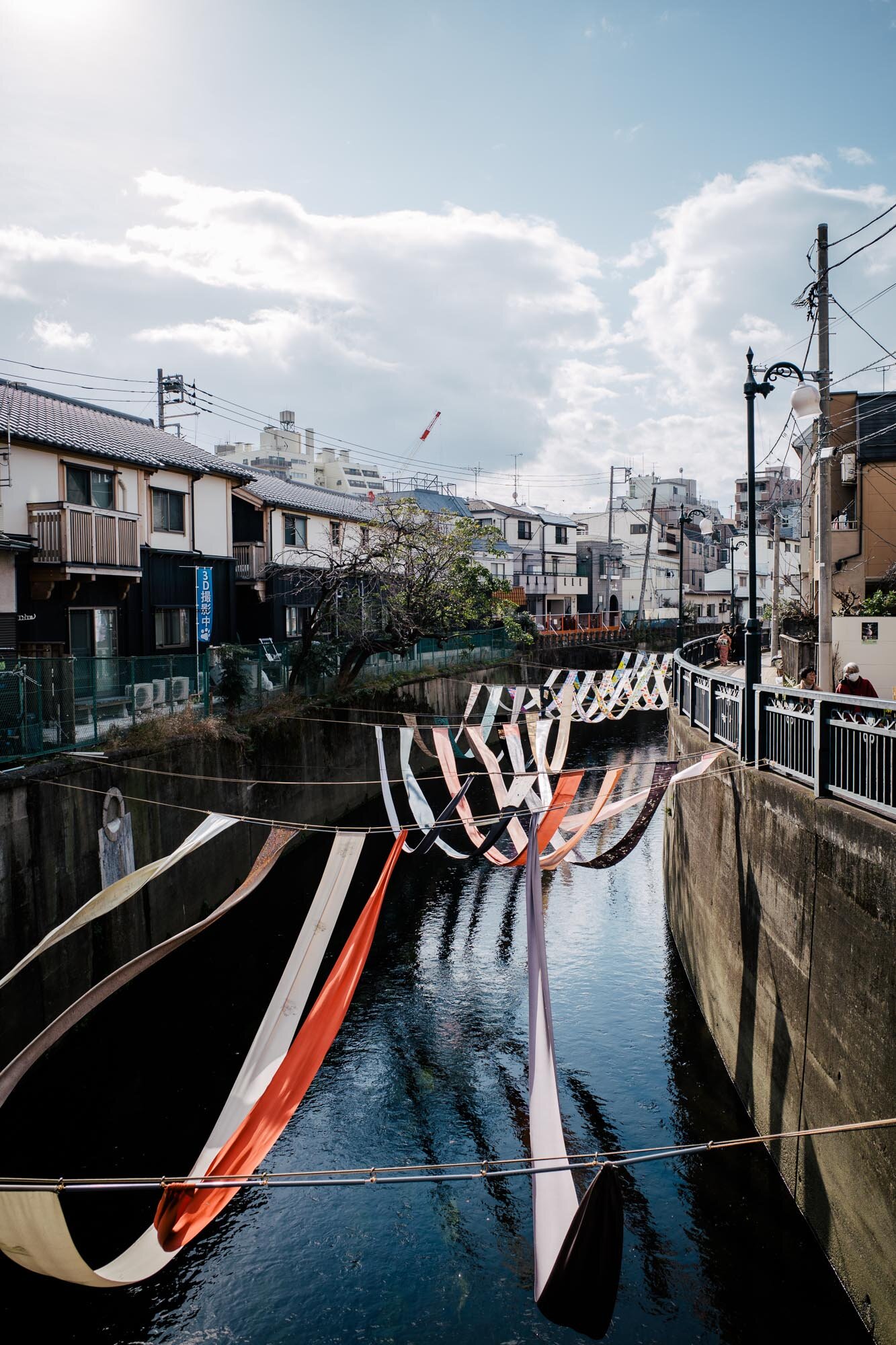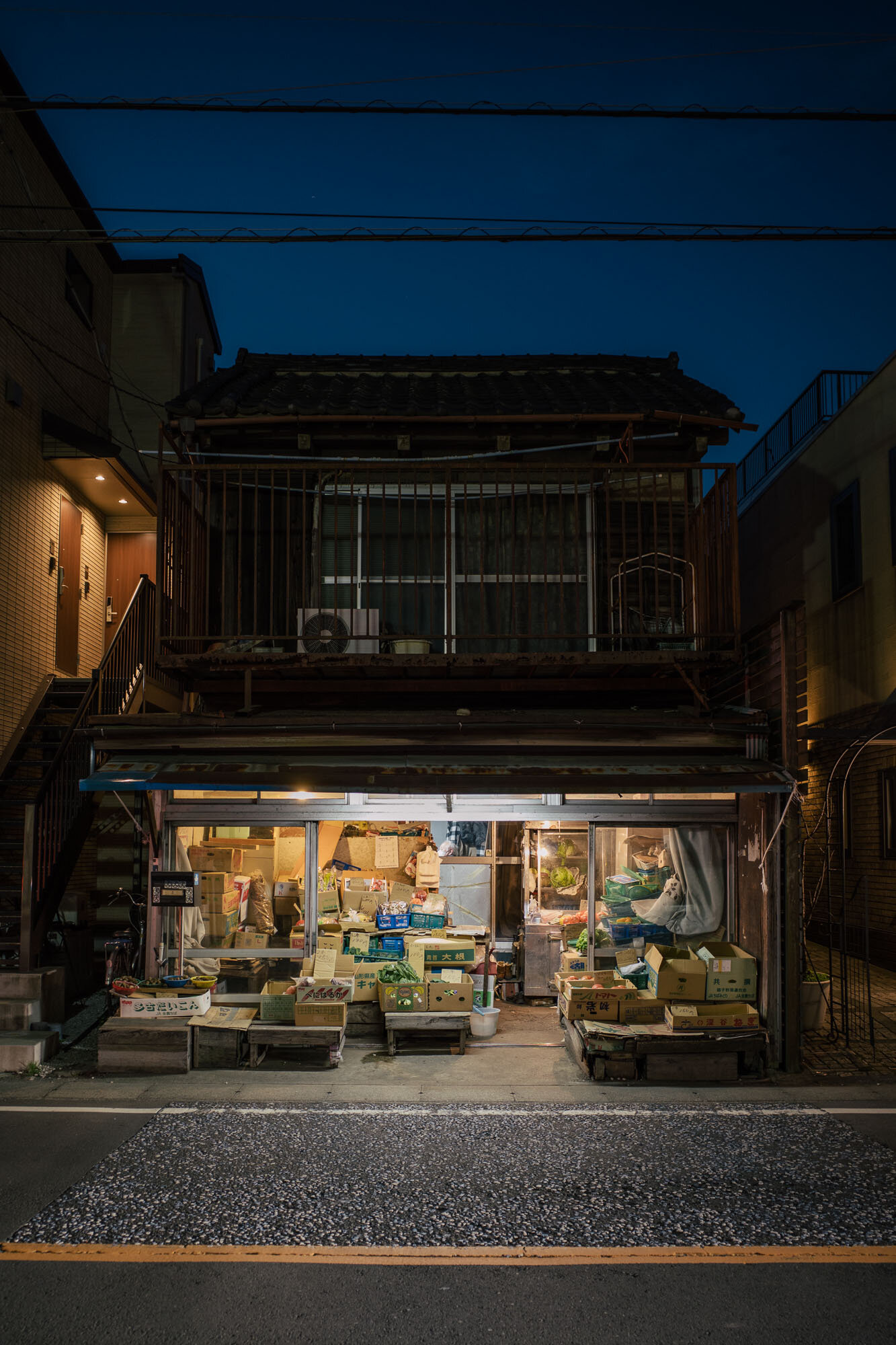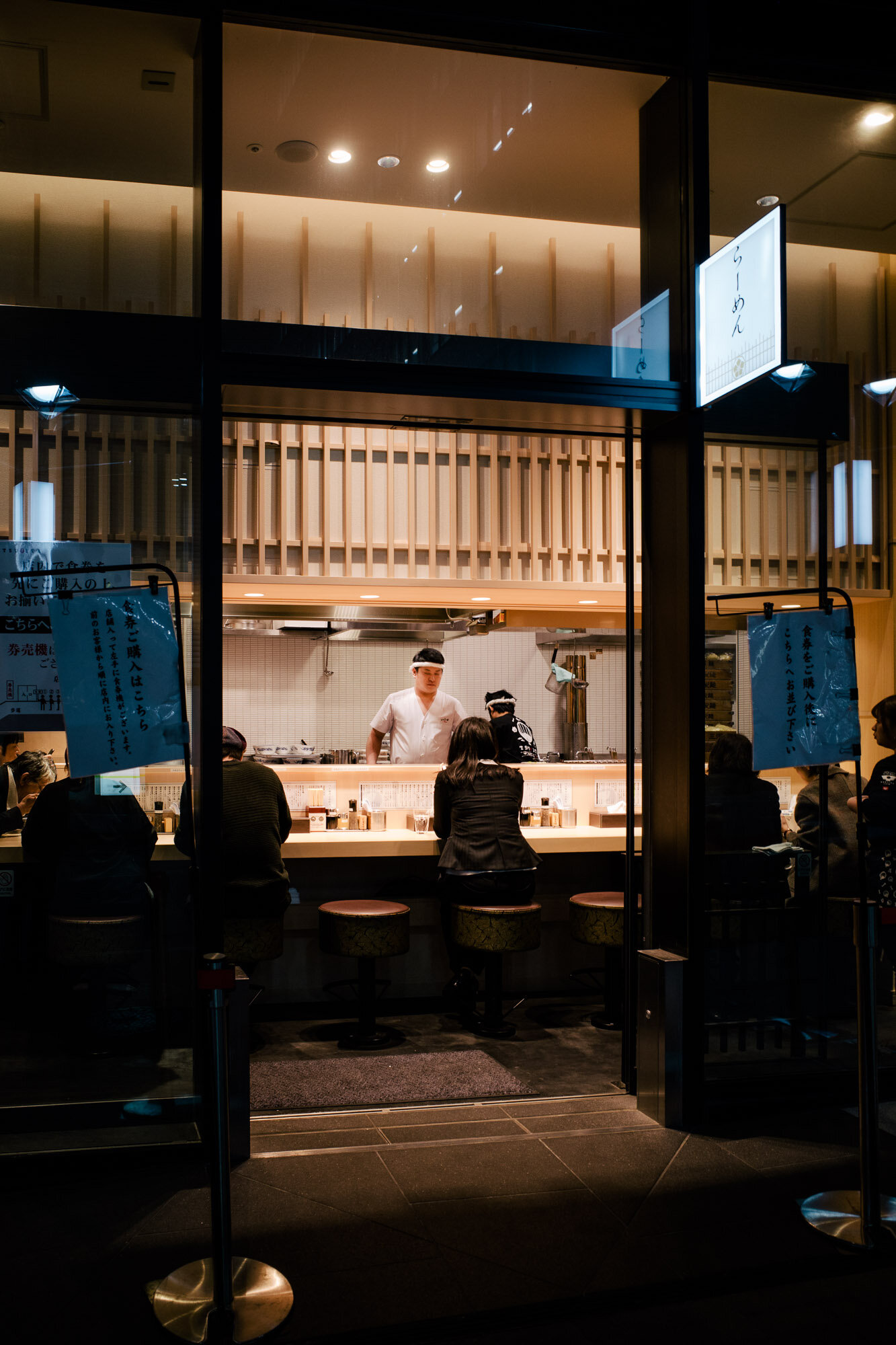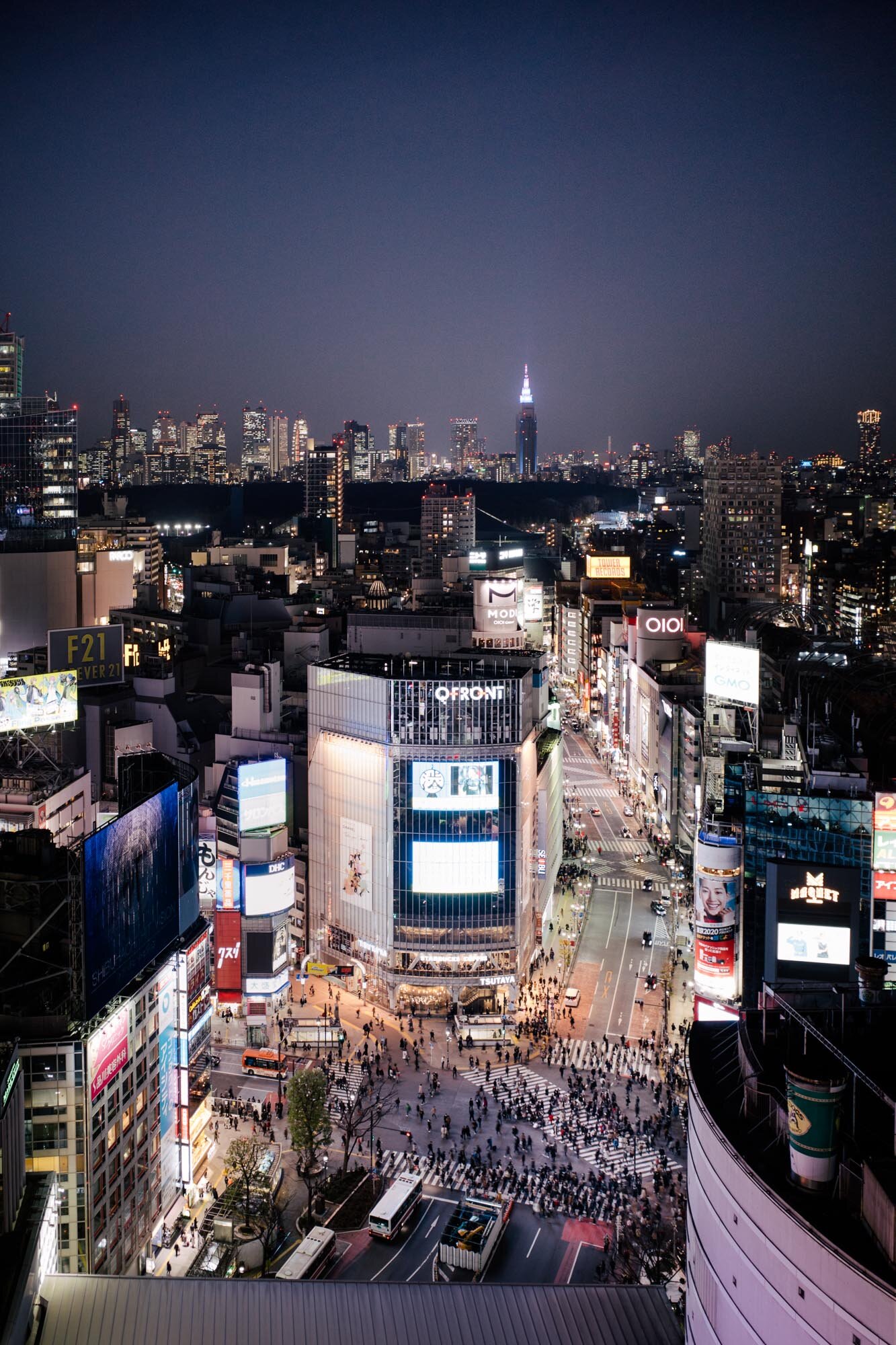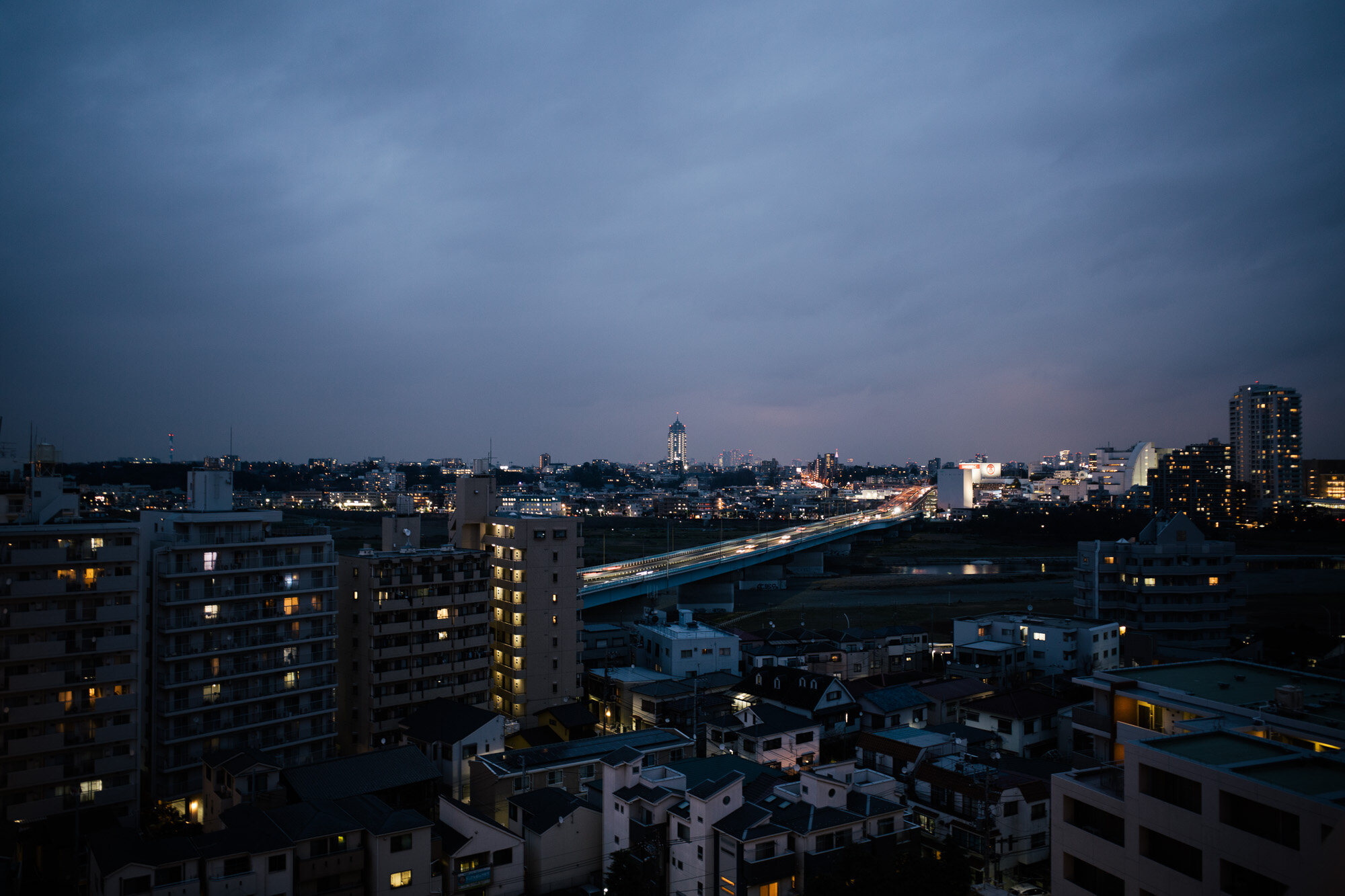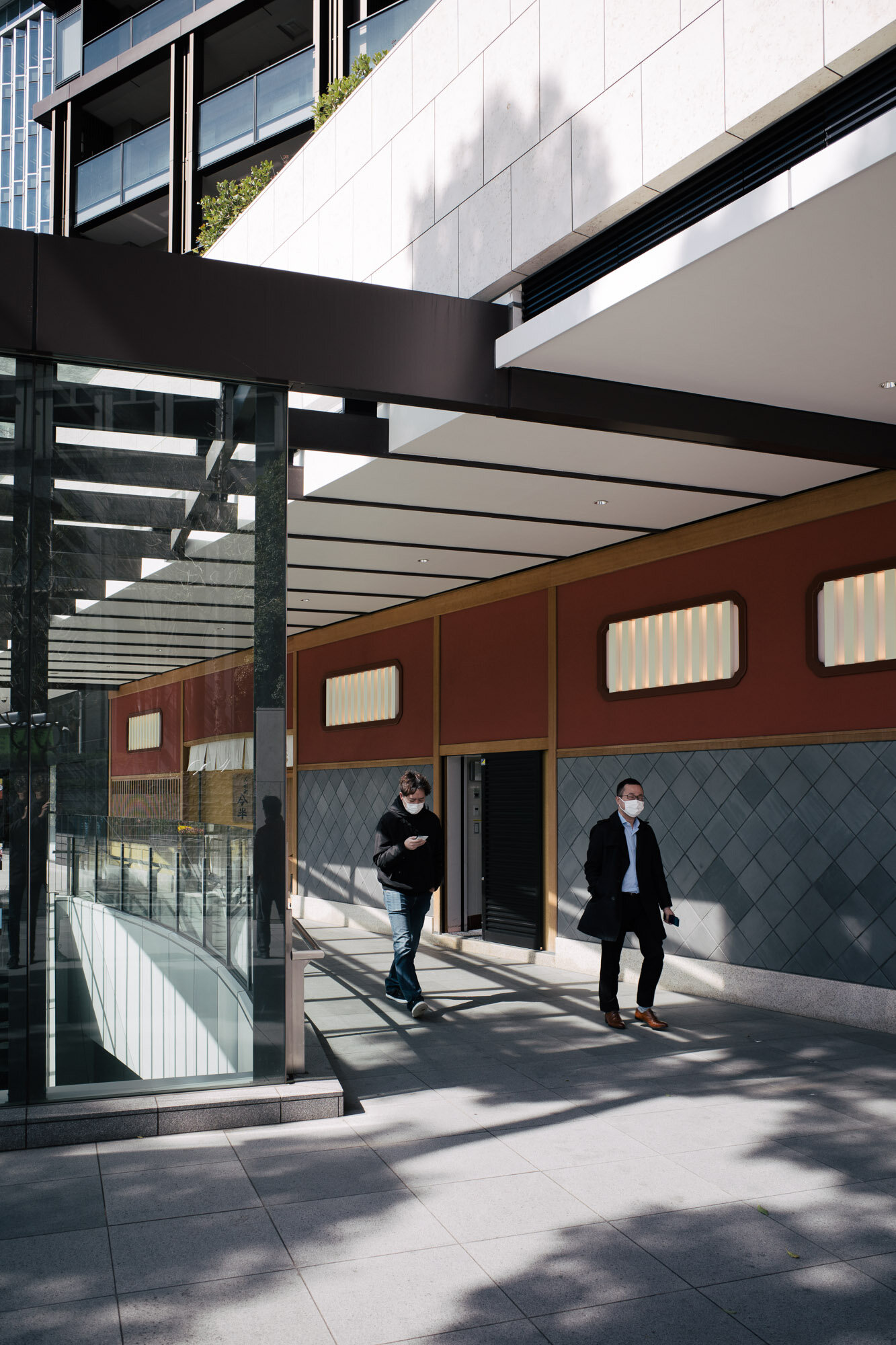It has now been well over one month since I picked up the Ricoh GR III, and I've been using it daily since then. During these two weeks, it has joined me out on the streets of Tokyo, to a few smaller hikes and day-trips in the outskirts of the city, as well as on a three day trip to the Izu peninsula, where some of the earliest cherry blossoms were in full bloom. While one month is by no means enough to fully get to know a camera, it is enough to get a solid understanding of whether or not it will warrant a permanent place in my bag or not.
As anyone who always carries a camera with me, I think there's a constant hunt for the perfect compact camera. A device that can be taken on all those occasions when we may not be shooting for professional purposes, but still want a high-quality camera to bring with us when we're out and about. Something that can deliver reliable results during a wide range of shooting conditions yet is small and light enough never to weigh one down. The Ricoh GR series has been delivering on this promise perhaps longer than any other compact camera, with roots dating back to 1996.
According to Ricoh, this is the 12th iteration of the series, which was born back in the film era. The first digital GR was released in 2005, but back then it was only using a tiny 1/1.7-inch sized sensor. In 2013, technical advancements made it possible to squeeze in an APS-C sensor in a more or less equally small camera body, which suddenly made it an exciting camera for many professionals. The GR III is the most recent generation, released in 2019, and this time we've got a pretty significant upgrade. Both a bump in sensor resolution from 16 to 24 megapixels, as well as the addition of image stabilization and touch controls.
While researching for this review, I tried to find out if the Ricoh GR III is indeed the world's smallest APS-C camera. While I didn't find any sources claiming this, I also didn't find a single source pointing towards a smaller camera and sports an equally large sensor. I find it somewhat baffling that Ricoh themselves haven't made a bigger deal about this, but perhaps that's due to their "Development Principles" for the GR series, of which the first one reads: "We do not compete in a number game using catalogue specs."
Anyway, a tiny camera it is, measuring 109,4 x 61,9 x 33,2 mm and weighing a paltry 257 grams. For comparison, the new Fujifilm X100V, which I presume is also on your radar if you're reading this, tips the scale at 478 grams, or 85% more.
Thankfully, Ricoh hasn't allowed the tiny size of the GR to compromise usability, or perhaps just the result of almost 25 years of experience from iterative updates to a product line -- Ricoh sure has had time to get things right. The camera is undoubtedly very well designed and I applaud the efforts that has been made to facilitate one-handed shooting. All the essential dials and buttons can be easily reached with your thumb and index finger. After a few days of use, this camera indeed felt extremely intuitive -- Perhaps more so than any other camera I've ever used. I quickly got accustomed to most aspects of how to use the camera, and I can easily say that that's one of the best things about it. It's a photographers camera, built to be quick and transparent in use, enabling the user to focus on the only thing that eventually matters -- making great images.
I did explore the menu system thoroughly only once, right after getting the camera. And while it was a pleasant experience with menus that for the most part, was easy to both navigate and understand, I've hardly taken a look at them at all since then. All the functions I need to access regularly are accessible either via the physical controls or because they can be assigned to one of the five slots in the custom menu, that opens up when pressing the rocker switch style thumbwheel used to adjust exposure compensation. This is not by any means a knock on the menu system, but rather praise to how thoughtfully all the physical controls can be customized.
The build quality of the Ricoh GR III is mostly excellent. It feels like a camera built to last. I haven't heard much about the previous generations falling apart, and I expect it to be the same this time around. That being said, however, there is a bit of rattle in the retracting lens mechanism that is somewhat unsettling. I can't ignore the thought that the motor controlling this mechanism will eventually fail, leading to what will most certainly be a costly repair. While I do understand that this approach was probably necessary to make the camera this small without compromising the optical quality (we'll get to that in a second). Yet, this remains to be one of my few real concerns regarding the build quality of the Ricoh GR III.
In my first impressions review of this camera, I mentioned that it felt as if the camera sometimes flat out refused to take photos. After using the camera for a few more days, I finally figured out that this wasn't the case. Instead, it's just the shutter button that requires a little bit more force than I'm used to, to actuate the shutter. If it's depressed too softly, the tactile experience is that the shutter button has reached the bottom, but yet no picture is taken. I quickly learned how to press the shutter in a way that is compatible with this camera, and I cannot say that this is something that bothers me anymore. However, I have to say that I think there's plenty of room for improvement when it comes to the shutter button, besides the response issue, it also feels somewhat flimsy and cheap considering how much this camera costs.
Another aspect that, somewhat surprisingly, stood out to me is the excellent connectivity between my smartphone (Oneplus 7) and this camera. After a painless initial pairing process, this is perhaps the first time I've had a camera that simply "just works". Connecting to the Ricoh GR III with my phone is as easy as launching the "Image Sync" app. The phone and camera will communicate over Bluetooth, but in order to facilitate faster file transfers, it seamlessly switches to wifi. After a few taps, I'm connected to the camera and can quickly transfer both RAW and JPG files to the camera. There's no stupid automatic downsizing of files á la Snap Bridge, and there are no hoops to jump through in order to grab the full-fledged raw-files either. They are just there and ready to transfer to my phone with a tap or two. Bravo Ricoh!
Speaking of connectivity, it's also worth mentioning that I generally liked the quality of the JPG files that this camera produces, particularly when using the "Positive Film" Image Control setting. There's also a High Contrast Black and White setting, which I'm sure will appeal to fans of Daido Moriyama. While the built-in JPG Image Control settings are all quite good, they are also tweakable, and two custom settings can be stored in the quick menu. I think most users will be able to find or create a SOOC-look that they are happy with.
In practice, I found the JPGs coming out of the GR III to be more or less on par with the ones I get from my Fujifilm X-T3. While I always shoot and archive RAW-files, it's sometimes handy to have high-quality JPG's ready for transfer to the phone for things like Instagram Stories or quick shares with friends and family.
The GR III also supports in-camera RAW-processing, using said image profile settings, and it works quickly and intuitively. So in the JPG department, I would say that the Ricoh GR III performs very well.
When it comes to the quality of the RAW-files that comes out of the Ricoh GR III things gets even more impressive. These files are among some of the sharpest I've ever seen, and it's clear that the updated lens design is an essential part of the image quality equation. This lens is certainly up to the task of resolving every bit out of the 24-megapixel sensor. Even wide open I see little reason to complain about the lens sharpness, even when pixel-peeping the most extreme corners. Distortion too, is not distracting, even when shooting cityscapes. The tiny bit that's there can easily be dealt with by applying the lens correction built into Lightroom. I'm not sure if the raw-files from the GR III comes with built-in digital corrections, the lack of any visible smearing in the corners of the files, make me doubt that there's anything sneaky going on behind the scenes.
Trying out the macro mode.
Macro mode is worth a mention too, as it has been vastly improved over the previous iterations. This time around, camera can focus as close as 6cm, making for some dramatic close up shots.
The only downside to the lens that I've found is the strong vignetting. Personally, vignetting doesn't bother me much, at least not in the kind of photos this camera invites me to shoot. And in those cases it was overly noticeable, all it takes is a click to remove it in Lightroom, so for all intents and purposes, I don't think this is a problem. If anything, I think it gives a rather nice character to the photos from this camera.
With regards to the overall image quality, there are just two things that bother me. The first one is that I've found aliasing in the files surprisingly often when shooting with this camera. While it shouldn't come as a complete surprise, given the combination of an aa-less sensor and a really sharp lens, I'm still surprised over how often I found it noticeable in the files that I got out of the Ricoh GR III. The other two cameras I use regularly, a Nikon Z7 and a Fujifilm X-T3, both sports sensors without an anti-aliasing filter, but I very rarely notice any aliasing in the files I get out of those cameras.
The other image quality issue that I've found is somewhat more noise than I was expecting. Even at base iso (100), there's a bit of grain in the shadows that can get obvious once you start pushing the files. Again, I'm comparing this to the results I get out of the Z7 and the X-T3, which are both somewhat cleaner on the pixel level at base ISO. According to Ming Theins review of the Fujifilm XF10, the otherwise similarly specced (but half price) Fuji might be better than the GR III in this regard, so if you want the lowest noise possible, I would suggest taking a look at both cameras before you make up your mind.
Speaking of making up minds, the primary reason why I picked the GR III instead of the Fujifilm XF10 was because the Ricoh, unlike most rivals, now comes with a built-in stabilizer. As someone who shoots quite a lot of night cityscapes here in Tokyo, I really appreciate being able to hand-hold my shots at long shutter speeds in order to keep ISO as low as possible or to introduce some motion blur in the image. The results I've been getting out of the Ricoh GR III when shooting at night has been some of the most impressive shots I've ever seen from a compact camera. I've learned that I'm usually able to get sharp photos down to around ⅓ of a second. That's if I shoot a burst of 4-5 photos, and pick the best one out of those. For more consistent results, I would say somewhere around 1/5th of a second is the limit. At that speed, at least 50% of the frames are perfectly sharp on the pixel level. Compared to using a non-stabilized camera, like the XF10, I find that the stabilizer significantly improves the kind of image quality I can get in practical terms, for my type of shooting. I find this difference worth the undoubtedly steep price hike, but I've given it many long and hard thoughts before reaching this conclusion, and I'm positive there are plenty of potential buyers out there for whom the XF10 would make much more sense.
1/4 of a second, hand-held.
What about autofocus then? During the time I've spent with the Ricoh GR III, I would say that it has been... adequate. It's not the fastest camera out there, particularly not in low-light situations. There have been a few cases when it has misfocused, even with contrasty subjects in situations that shouldn't have posed any significant challenges for the camera. I don't find autofocus as quick and reliable as on my other two mirrorless cameras, however, and I have to say that I've been somewhat disappointed with the level of performance. If anything, using the Ricoh GR III was somewhat reminding me of the frustrating Sony RX-1 that I've also reviewed on this website. Granted, the Ricoh isn't nearly as bad. Still, I would say it's autofocus performance is, unfortunately, more similar to the Sony from 2013, than it's mirrorless peers from the current era.
Many users of the GR III praise the snap focus functionality. This is a somewhat unique feature of the GR series, where the camera automatically sets the focus at a predetermined distance if the shutter button is quickly pressed all the way down, rather than giving the camera enough time to focus once it's half-pressed. In practice, I haven't used this function much myself. I can certainly see it being useful though, especially for daylight street shooting, using a small aperture and setting the snap-focus to hyperfocal distance, for example.
Finally, let's address the issue of battery life. Compared to many other cameras, the Ricoh GR III performs quite poorly, with a fully charged battery giving me somewhere around 300 shots. That's usually with the screen on its brightest setting, which indeed is bright and works well even on sunny days here in Tokyo. Ricoh doesn't include a dedicated charger in the box, as the camera also charges over USB-C. I quickly purchased a set of two extra knock-off batteries and a dedicated charger for less than 20 USD on Amazon.
So finally, conclusion time. I like the Ricoh GR III in so many ways, the size, the build quality, the discreet look and feel, and perhaps most importantly, the quality of the files it outputs. It handles well and gets out of my way for most of the time. Startup time is quick, and the camera generally responds quickly overall for sudden events on the street.
Sure, the price is steep, but in this case, I am willing to pay that premium thanks to the unique features of this camera. For anyone looking for high build quality, excellent optics AND a built-in stabilizer in a truly pocketable format, there's simply not much in terms of competition. If these factors are important to you too, the Ricoh GR III easily comes highly recommended.
All of the photos on this page has been shot hand-held with the Ricoh GR III, and are edited to taste in Adobe Lightroom.
If this review was helpful to you, please consider supporting me by purchasing the Ricoh GR III on Amazon by using this affiliate link. The price will be the same to you, but I will get a small commision from your purchase. Thank you!



